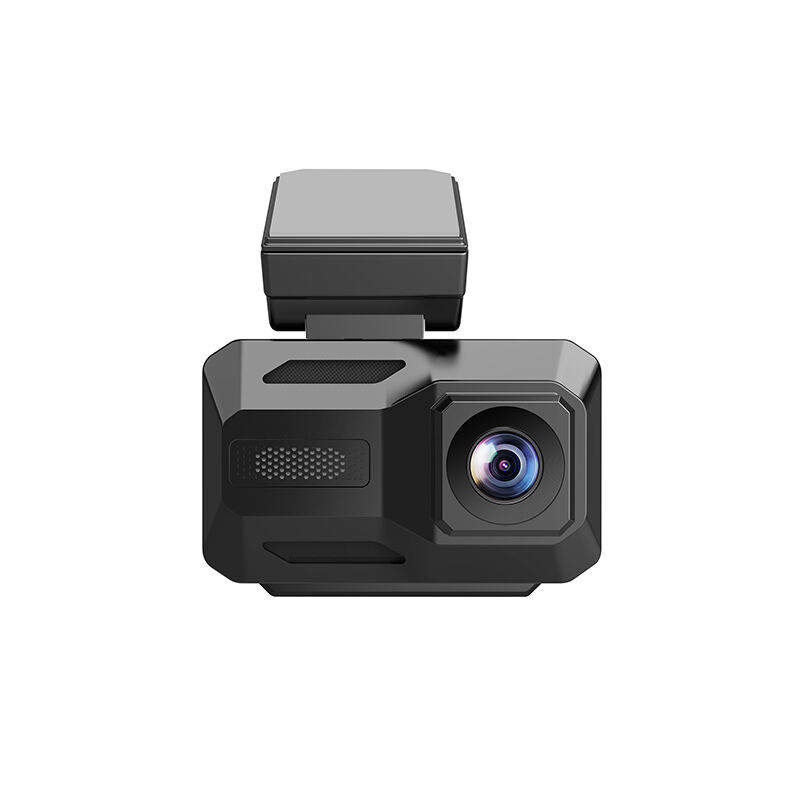Why Advanced Driver Assistance Matters
Safety Features That Make a Difference
Advanced driver assistance systems have become a crucial part of modern vehicle safety, and integrating video recording with these systems raises the bar even higher. ADAS Dashcams combine camera-based recording with active safety alerts, giving drivers a second pair of eyes and a smart companion on every trip. These devices not only record incidents but can warn drivers about lane departures, forward collisions, and pedestrian crossings. With rising traffic density and distracted driving, equipping a vehicle with these technologies helps drivers anticipate hazards and react sooner.
Enhanced Situational Awareness
How much more confident would you feel with an extra set of eyes monitoring blind spots and alerting you to hazards? ADAS Dashcams enhance situational awareness by combining visual recording with sensor-driven alerts. Whether it is night driving, heavy rain, or dense urban traffic, these dashcams assist in preventing collisions before they happen. When drivers receive timely warnings, reaction times improve and risky maneuvers are reduced.
Evidence and Insurance Benefits
Evidence Collection and Claims Processing
When an accident occurs, clear footage from ADAS Dashcams can expedite insurance claims and clarify liability. The combination of alert logs and video gives insurers a more complete picture of events. This makes ADAS Dashcams not only a safety investment but also a practical financial one. Many insurers increasingly recognize the value of recorded evidence and may process claims more quickly when high-quality footage is available.
Data Management for Faster Resolutions
The combination of timestamps, GPS coordinates, and alert logs adds context to recordings and reduces ambiguity. When footage is correlated with logged alerts, assessors can reconstruct incidents more precisely. Using devices that produce well-organized clips and clear metadata simplifies the claims process and can shorten dispute resolution times.

Key Technologies Behind ADAS Dashcams
Computer Vision and Machine Learning
Modern ADAS Dashcams use computer vision and machine learning to distinguish between relevant road objects and background noise. These algorithms reduce false alarms and increase detection accuracy. Firmware updates often bring improvements in detection models, so choosing units with active software support provides long-term benefits for performance.
Sensor Fusion for Reliable Alerts
Many systems rely on sensor fusion—combining camera data with accelerometers, GPS, and sometimes radar inputs—to provide more reliable alerts. Sensor fusion helps ADAS Dashcams maintain accuracy in challenging conditions like low light or inclement weather. By integrating multiple sensor sources, these units offer more consistent performance across different vehicle models and driving scenarios.
Choosing the Right Unit
Form Factor and Installation
Are you looking for a discreet in-windshield unit or a sturdier, dashboard-mounted device? Form factor affects field of view and installation complexity. Hardwired units offer continuous power and parking mode recording, while plug-and-play options are easier to install. Think about whether you need professional installation or a simple DIY setup and choose a model that fits your technical comfort level.
Power and Parking Mode
One of the most valuable features is parking mode, which records impacts and motion when the car is off. Models with low-power draw or smart power management are ideal for avoiding battery drain. If your vehicle lacks a dedicated hardwire kit, consider devices that support external battery packs or have configurable low-voltage cutoffs to protect the vehicle battery.
Performance and Features to Prioritize
Video Clarity and Field of View
Clear video is essential for post-incident analysis. ADAS Dashcams with 1080p or higher recording and wide dynamic range capture license plates and road signs more reliably. A wide field of view ensures the camera captures multiple lanes and roadside activity. Optical quality and sensor size both influence how well units perform in challenging lighting.
Night Vision and Low-Light Performance
Night driving poses unique challenges, but units with larger sensors and optimized low-light algorithms handle it more effectively. Infrared support or enhanced dynamic range helps capture useful footage during dusk and dawn. If you drive frequently after dark, prioritize models tested for strong nighttime clarity.
Use Cases
Personal Vehicles and Commuting
For daily commuters, ADAS Dashcams can reduce stress by providing lane-keeping and collision warnings. They are especially useful for new drivers who benefit from real-time guidance. Parents often feel reassured when their teenage drivers have a safety system that records trips and provides helpful alerts.
Fleet Management and Commercial Use
Fleet operators use these devices to monitor driver behavior, improve safety protocols, and reduce liability. Aggregated data from ADAS Dashcams can reveal common risk patterns, informing better training and routing decisions. Fleets equipped with such units often see fewer accidents and lower insurance costs over time.
Installation and Maintenance Best Practices
Mounting and Calibration
Mount the camera where it has an unobstructed view of the road and close to the driver's line of sight. Calibration is important for lane detection and other ADAS features; follow manufacturer instructions to align the unit properly. Some units offer automatic calibration, simplifying setup and improving detection accuracy.
Firmware Updates and Data Management
Keeping firmware current ensures you benefit from detection improvements and bug fixes. Many vendors provide update tools or mobile apps for convenient maintenance. Manage recordings with overwrite policies and consider cloud backup if available so your device retains the most relevant evidence without filling storage.
Legal and Privacy Considerations
Data Ownership and Sharing
Who owns the footage captured by these devices? In many cases the vehicle owner does, but laws vary by region. When sharing footage for insurance or legal purposes, be prepared to provide timestamps and GPS logs if available. Look for devices that support secure storage and encryption to protect sensitive data.
Audio Recording and Consent
Some jurisdictions restrict audio recording without consent. If your unit includes a microphone, be aware of local regulations and consider disabling audio to avoid legal issues. For fleet operations, clear policies about footage usage and consent reduce confusion and protect driver privacy.
Practical Tips for Getting the Most from These Devices
Training and Driver Acceptance
Drivers must understand what alerts mean and how to react. Are alerts meant to assist rather than replace attentive driving? Proper orientation prevents overreliance and encourages safer behavior. Short training modules and quick-reference guides help drivers interpret warnings correctly.
Routine Checks and Cleaning
Keep the camera lens clean and inspect mounts periodically to maintain detection accuracy. Dirt, condensation, or a displaced mount can degrade performance. A quick monthly check often preserves reliable operation and consistent alerting behavior.
Buying and Support
Cost versus Long-Term Value
While high-end models may cost more initially, the long-term value comes from reduced risk and potential insurance benefits. Consider total cost of ownership, including installation, accessories, and any subscription services. Cost-effective units provide consistent alerts and clear footage without frequent replacements.
Warranty and Customer Support
Review warranty terms and customer support reputation before purchasing. Good support reduces downtime and ensures firmware updates are delivered reliably. Vendors that provide responsive help and clear documentation improve the ownership experience significantly.
Advanced Topics
Event Prioritization and Smart Recording
Not every event needs saving, so systems that prioritize based on impact and anomaly detection are helpful. Intelligent logging reduces storage needs and highlights the most relevant clips. Smart recording features can tag events by severity, timestamp, and GPS location for easier review and reporting.
Emerging Trends and Future Directions
Expect tighter integration between cameras, radar, and other sensors in coming years. Edge computing allows more analysis on-device, minimizing the need for continuous cloud streaming. Newer systems will offer predictive warnings and deeper analytics to help drivers avoid risky scenarios before they escalate.
Accessories and Integration
Practical Accessories and Add-ons
Useful add-ons include sun shields, thermal insulation covers, and protective cases that help units withstand extreme temperatures. Dual-channel systems capture front and rear views, offering comprehensive coverage. Wireless modules enable remote access to footage and real-time alerts for managers needing immediate incident notifications.
Integration with Broader Systems
Consider how a device might integrate with vehicle telematics or smart city infrastructure. As urban systems adopt connected sensors, devices that support standardized data formats can contribute anonymized data to improve traffic safety and emergency response capabilities.
Sustainability and Future-Proofing
Responsible Disposal and Durability
Select vendors offering recycling programs or buyback options. Durable hardware that resists corrosion and physical wear reduces replacement frequency, helping both budgets and the environment. Sustainable packaging and clear disposal guidance are signs of responsible manufacturers.
Customization and Upgrade Paths
Choose units with configurable settings and open APIs to integrate with other tools. Modular designs and upgradeable firmware prolong usable life and protect your investment as technologies evolve. Customizable detection thresholds let you tailor performance to unique operational needs.
FAQ
What are ADAS Dashcams best used for?
ADAS Dashcams are best used for enhancing driver awareness, recording evidence in the event of an incident, and providing data for fleet safety programs.
Do ADAS Dashcams require professional installation?
Some units are plug-and-play, but for full ADAS functionality and reliable parking mode, professional hardwiring and calibration are often recommended.
Can ADAS Dashcams work in all weather conditions?
Many models are designed to function across a wide range of conditions, but extreme weather can affect performance. Choose units with proven low-light and weather-resistant performance if you drive in harsh environments.
How do ADAS Dashcams affect insurance claims?
Footage and alert logs can clarify fault and speed up claims processing. Some insurers may offer incentives or faster processing for vehicles equipped with these advanced recording and alerting devices.
Table of Contents
- Why Advanced Driver Assistance Matters
- Evidence and Insurance Benefits
- Key Technologies Behind ADAS Dashcams
- Choosing the Right Unit
- Performance and Features to Prioritize
- Use Cases
- Installation and Maintenance Best Practices
- Legal and Privacy Considerations
- Practical Tips for Getting the Most from These Devices
- Buying and Support
- Advanced Topics
- Accessories and Integration
- Sustainability and Future-Proofing
- FAQ



